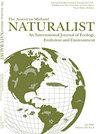Influence of Vegetation and Soil on Relative Density of Baird's Pocket Gopher (Geomys breviceps) in Louisiana
IF 0.6
4区 环境科学与生态学
Q4 Agricultural and Biological Sciences
引用次数: 4
Abstract
Abstract. Baird's pocket gopher (Geomys breviceps) is the only species of pocket gopher in Louisiana. Interest in this species' natural history has increased due to its close association with the Louisiana pine snake (Pituophis ruthveni), which recently was listed as threatened under the Endangered Species Act. Approximately 75% of P. ruthveni's estimated prey biomass consists of G. breviceps, whose burrow systems also provide shelter and hibernacula. Therefore, increasing densities of G. breviceps may assist in the recovery and management of P. ruthveni. Previous studies have identified specific habitat characteristics that are preferred by G. breviceps, but none have assessed how different habitats affect pocket gopher density. Live trapping was conducted at sixteen sites throughout Louisiana to determine relative density of G. breviceps. Vegetation and soil data were collected, and a multi-model selection approach was used to determine which variable(s) best explained variation in relative density. Relative densities of G. breviceps ranged from 0 to 12.5 gophers/ha with an average of 3.44 gophers/ha. Canopy cover best predicted numbers of G. breviceps across the study area. Soil data was not a good predictor; however, all sampling plots possessed sandy loam or loamy sand soils, which is preferred by Geomys spp. Management strategies aimed at increasing density of G. breviceps should focus on continued restoration of longleaf pine forest and supplemented by opening patches of forest, especially in areas with preferred soil textures.植被和土壤对路易斯安那州贝氏口袋地鼠相对密度的影响
摘要贝德口袋地鼠是路易斯安那州唯一一种口袋地鼠。由于它与路易斯安那松蛇(Pituophis ruthveni)的密切联系,人们对这个物种的自然史越来越感兴趣,路易斯安那松蛇最近被列为濒危物种法案下的受威胁物种。据估计,鲁斯维尼的猎物生物量中约有75%是由短叶蝉组成的,短叶蝉的洞穴系统也提供住所和冬眠场所。因此,增加短叶蝉的密度可能有助于绿叶蝉的恢复和管理。以前的研究已经确定了短囊地鼠偏好的特定栖息地特征,但没有研究评估不同栖息地对口袋地鼠密度的影响。在路易斯安那州的16个地点进行了现场诱捕,以确定短纹姬虫的相对密度。收集了植被和土壤数据,并采用多模型选择方法来确定哪些变量最能解释相对密度的变化。相对密度为0 ~ 12.5只/ha,平均3.44只/ha。冠层覆盖最能预测研究区短叶松的数量。土壤数据不是一个很好的预测因子;然而,所有样地均为沙质壤土或壤土,这是长叶松的首选土壤。增加短叶松密度的管理策略应以持续恢复长叶松林为重点,并以开辟林地为补充,特别是在土壤质地较好的地区。
本文章由计算机程序翻译,如有差异,请以英文原文为准。
求助全文
约1分钟内获得全文
求助全文
来源期刊

American Midland Naturalist
环境科学-生态学
CiteScore
1.20
自引率
0.00%
发文量
38
审稿时长
18-36 weeks
期刊介绍:
The American Midland Naturalist has been published for 90 years by the University of Notre Dame. The connotations of Midland and Naturalist have broadened and its geographic coverage now includes North America with occasional articles from other continents. The old image of naturalist has changed and the journal publishes what Charles Elton aptly termed "scientific natural history" including field and experimental biology. Its significance and breadth of coverage are evident in that the American Midland Naturalist is among the most frequently cited journals in publications on ecology, mammalogy, herpetology, ornithology, ichthyology, parasitology, aquatic and invertebrate biology and other biological disciplines.
 求助内容:
求助内容: 应助结果提醒方式:
应助结果提醒方式:


